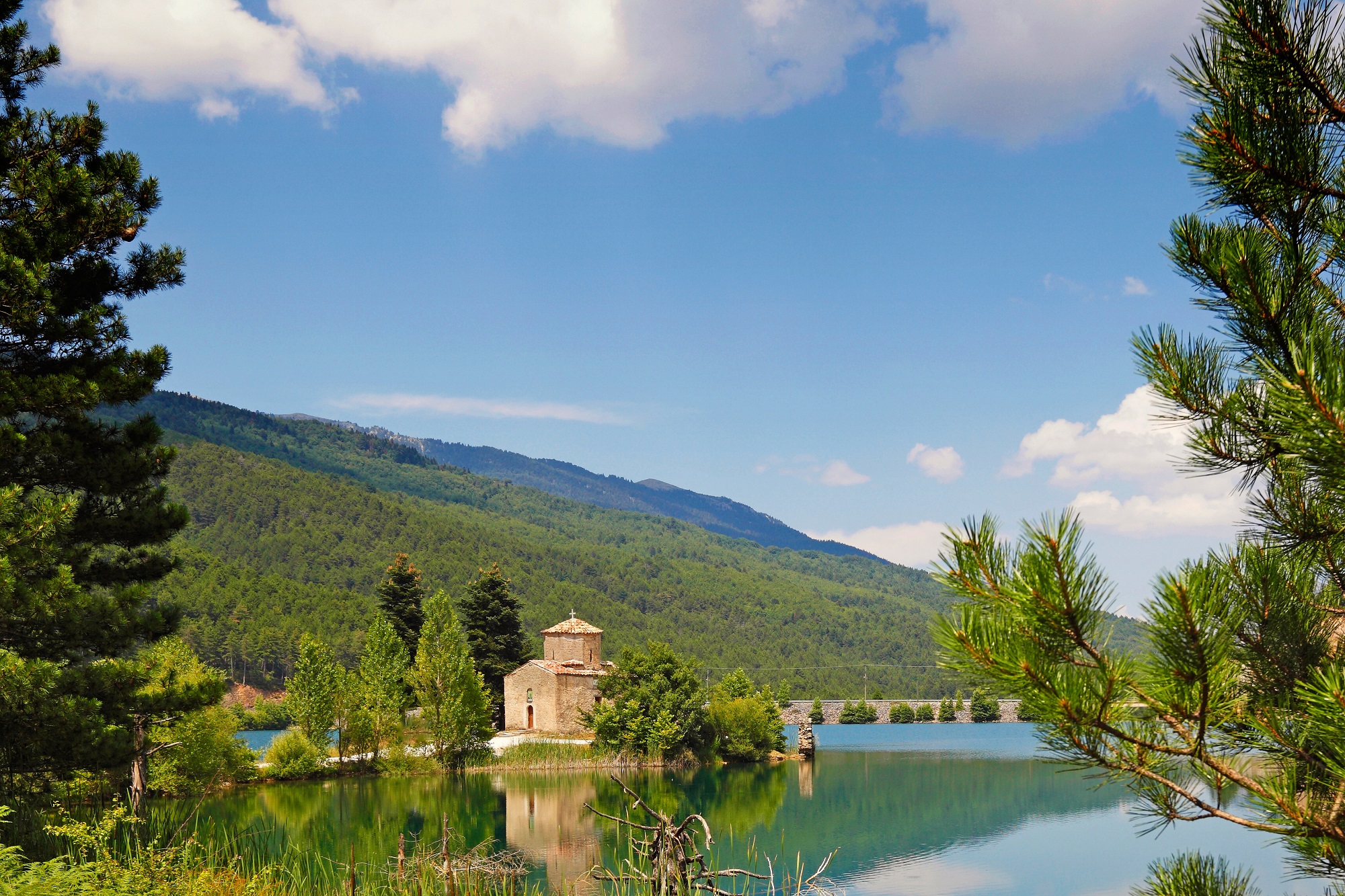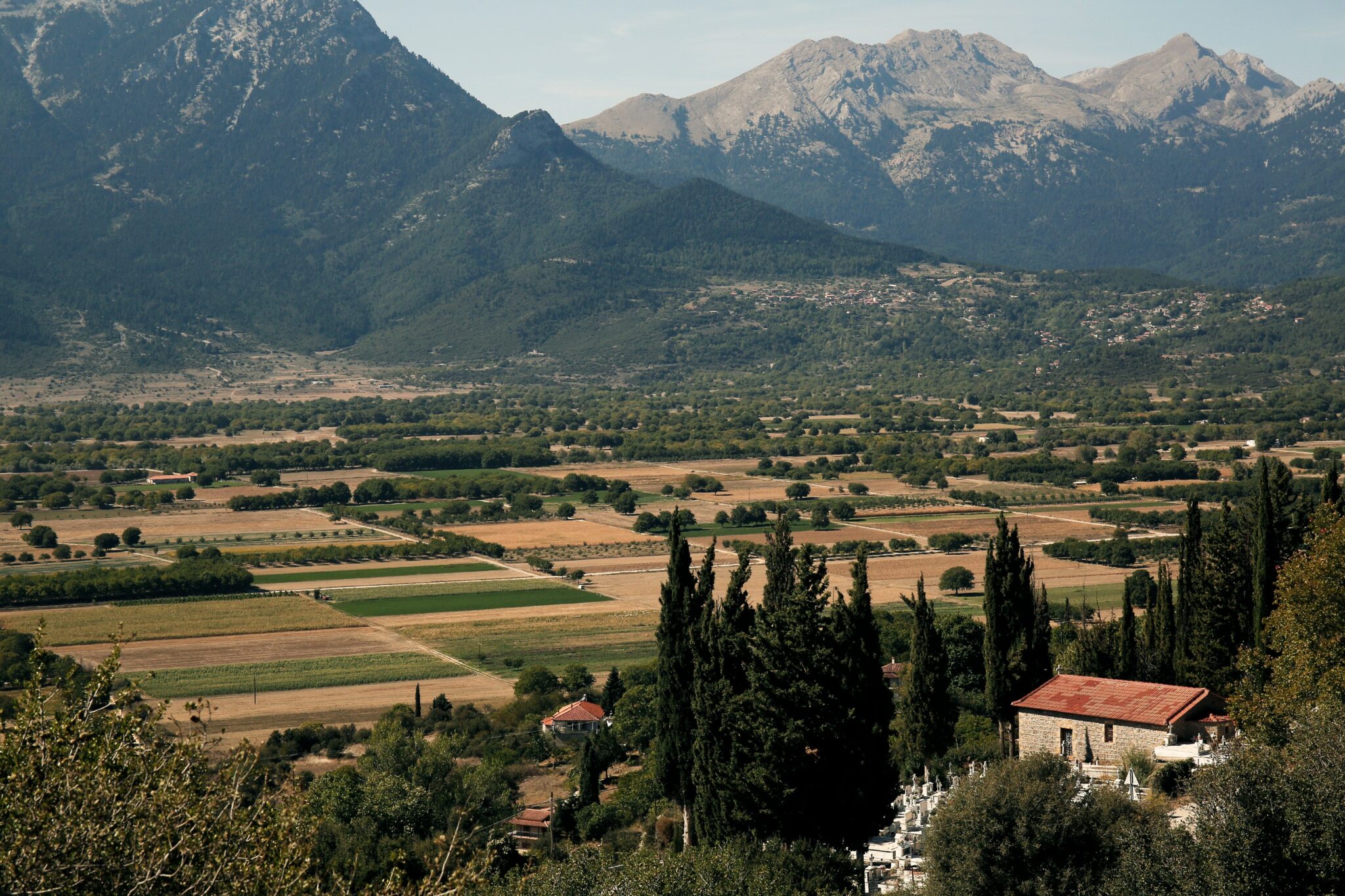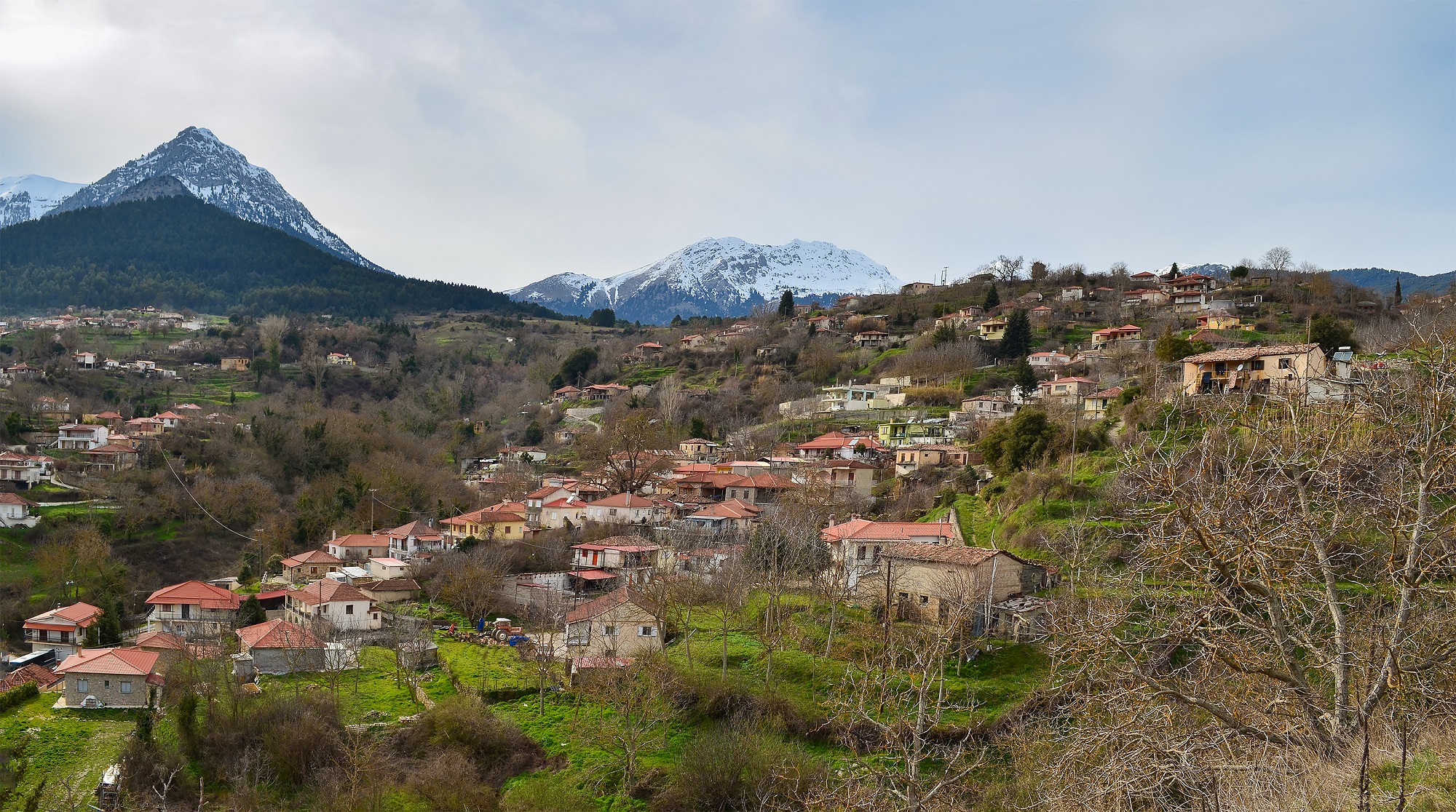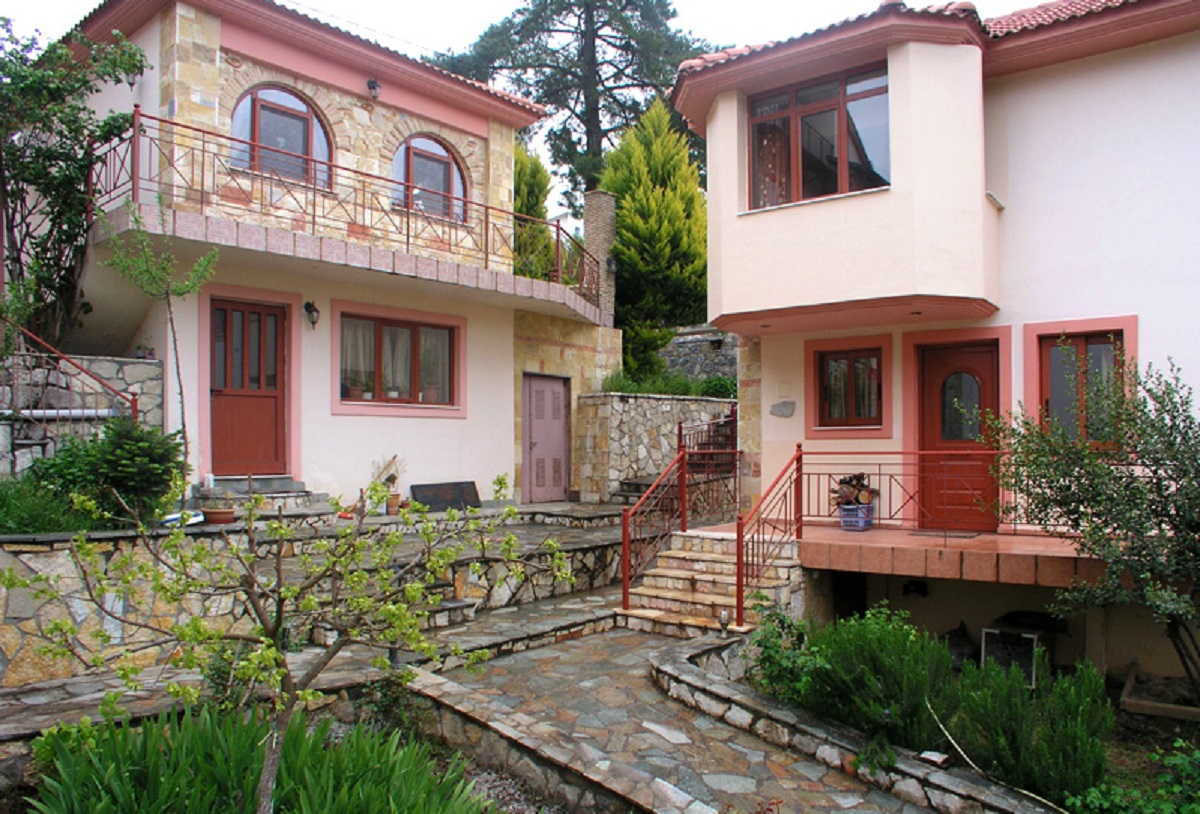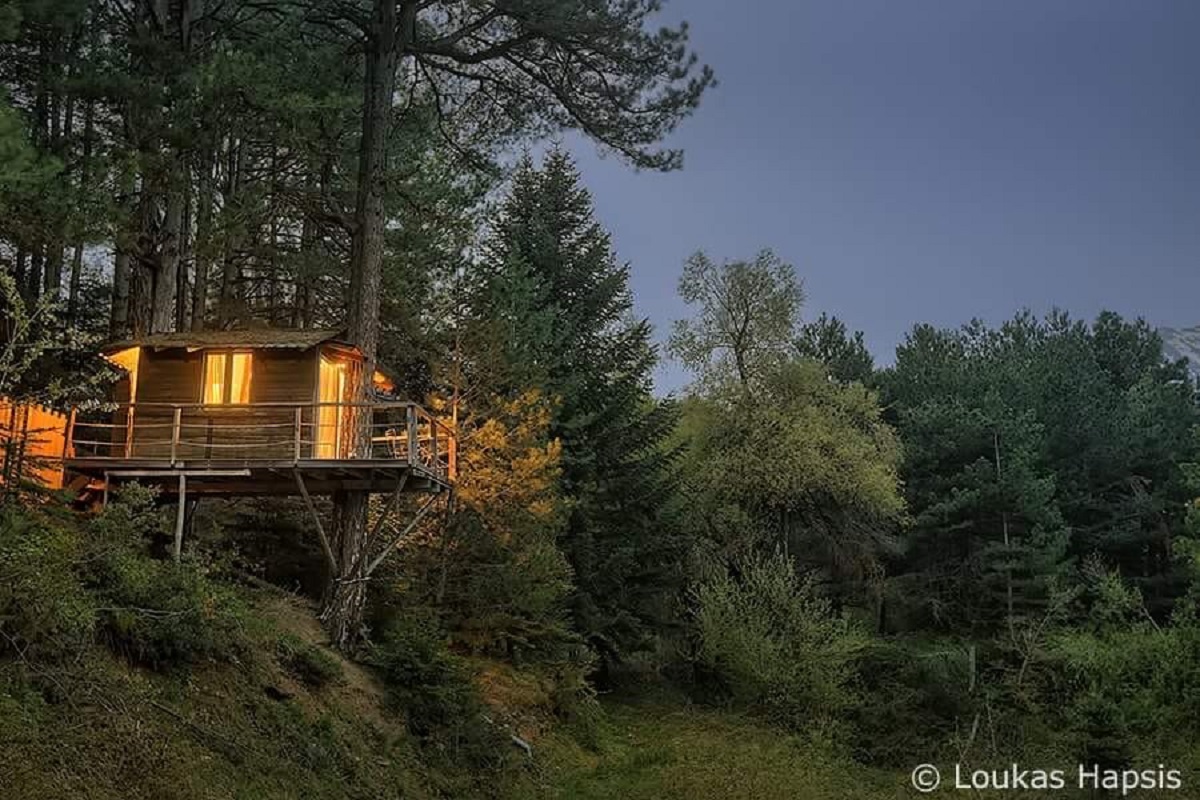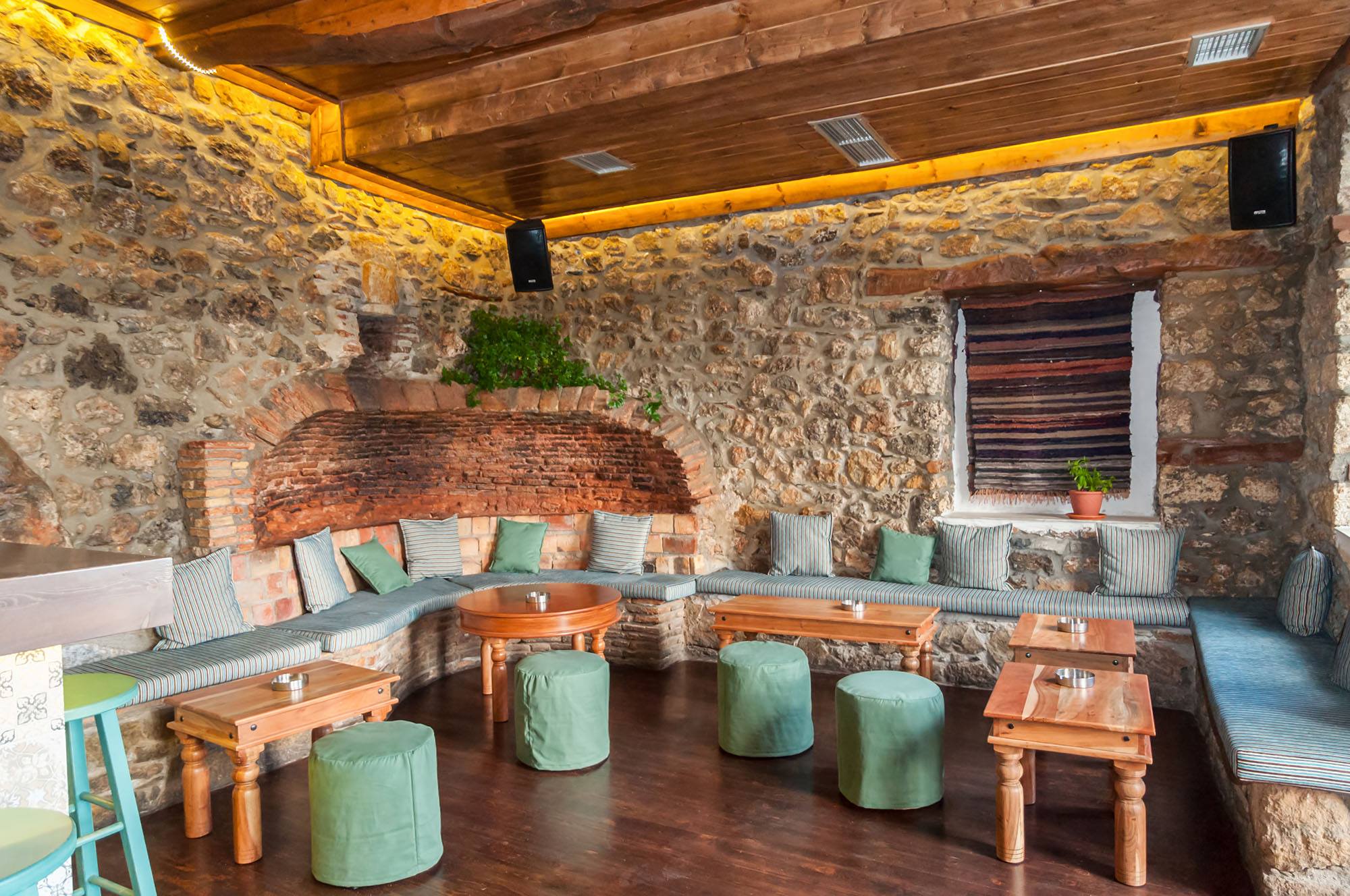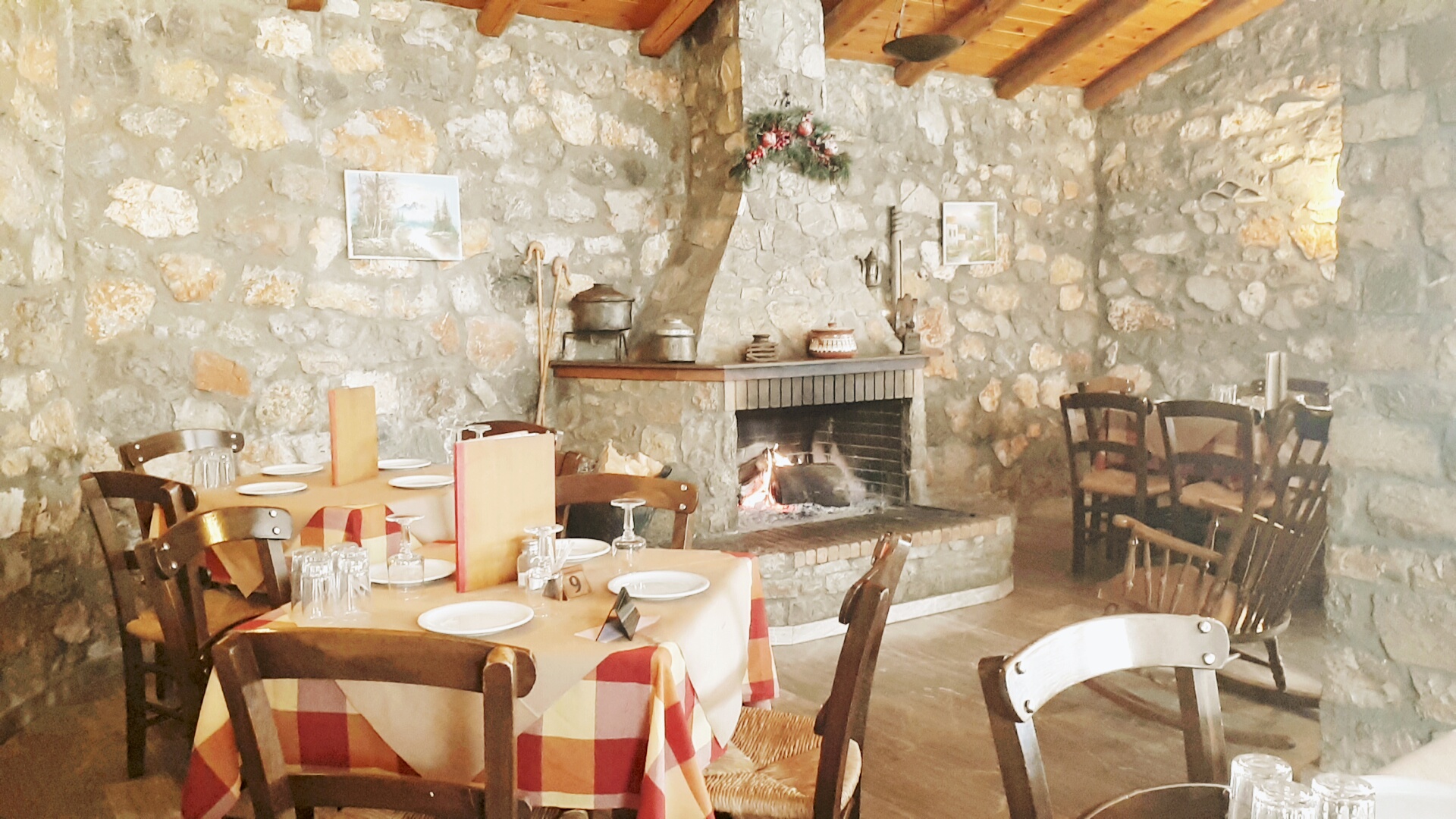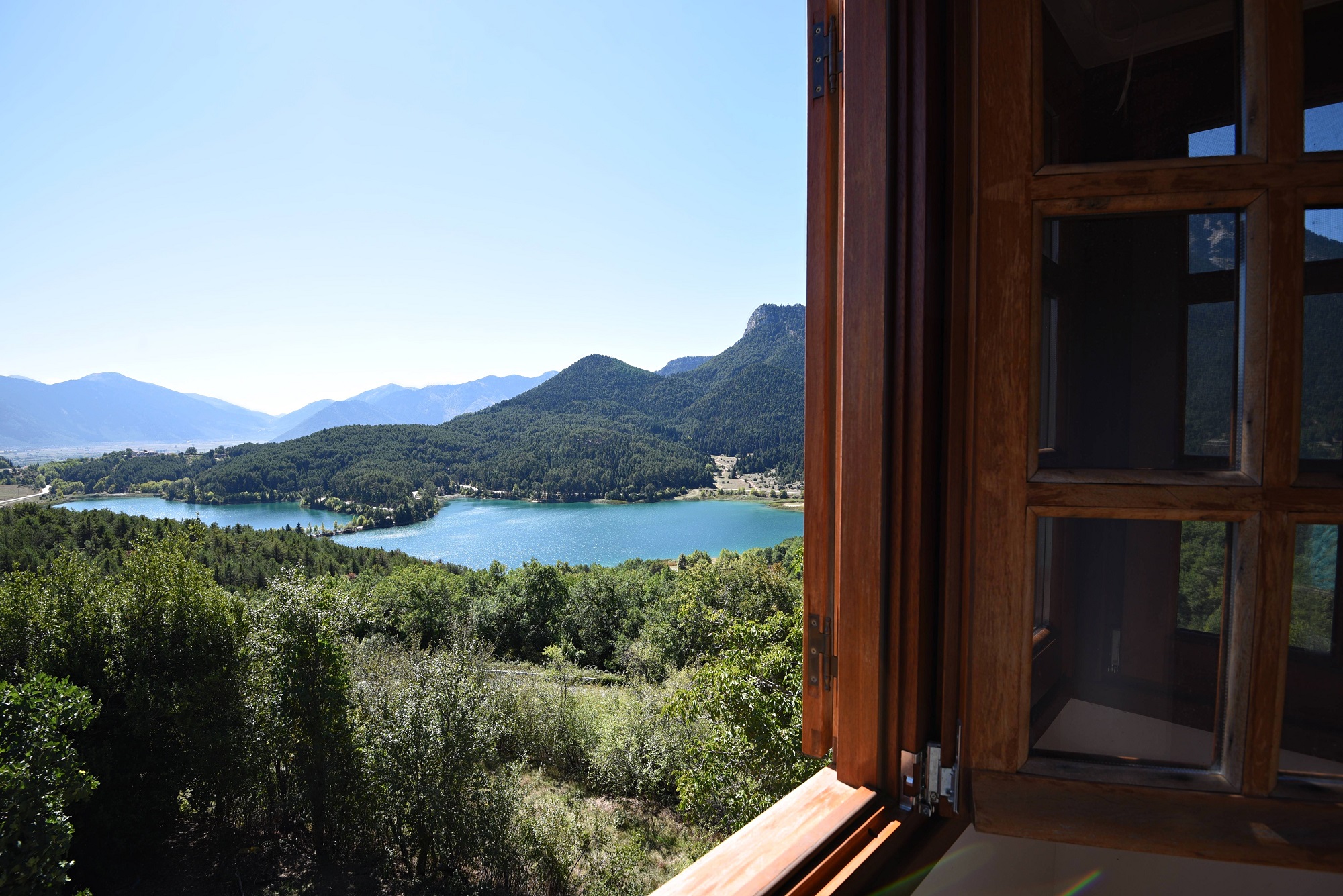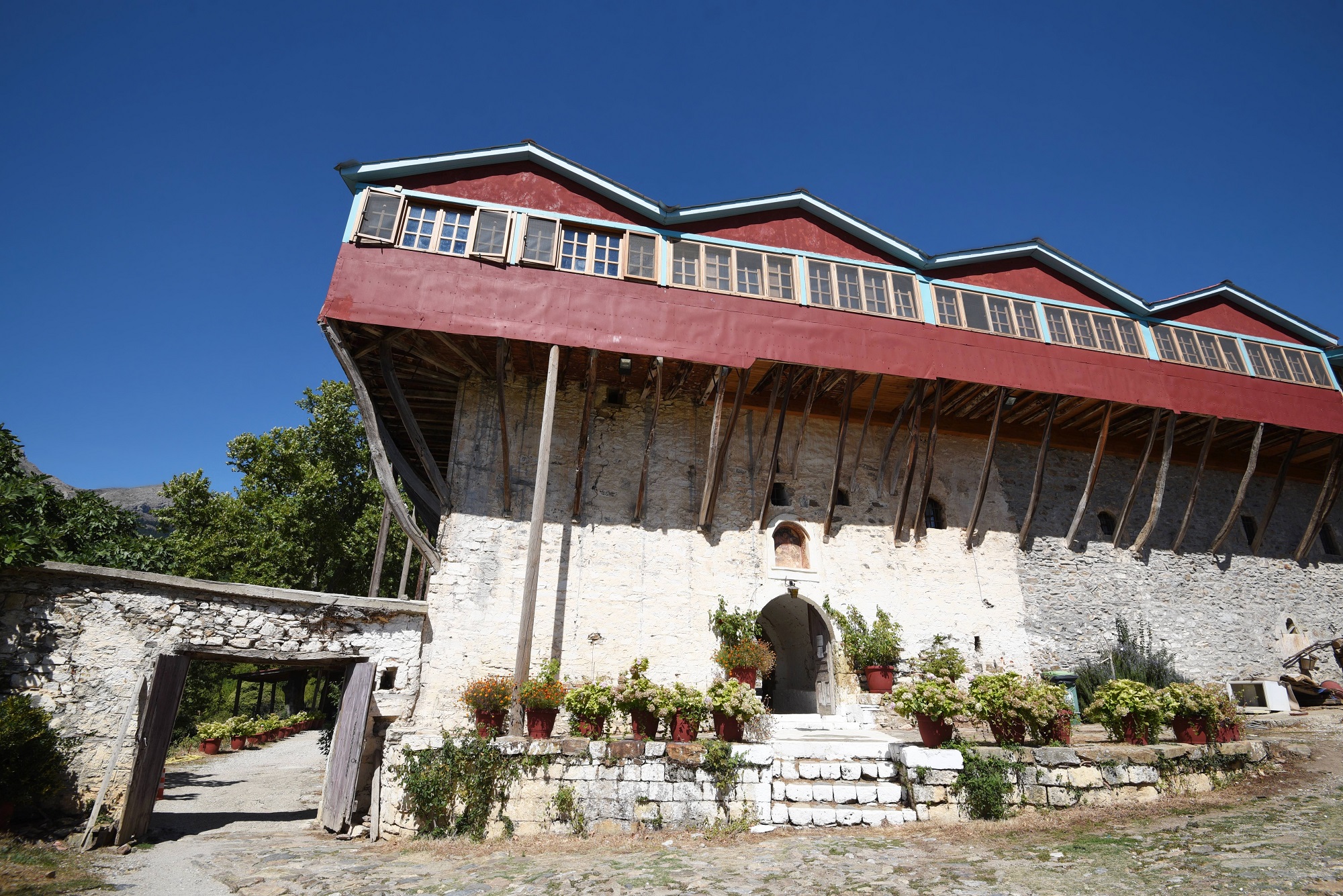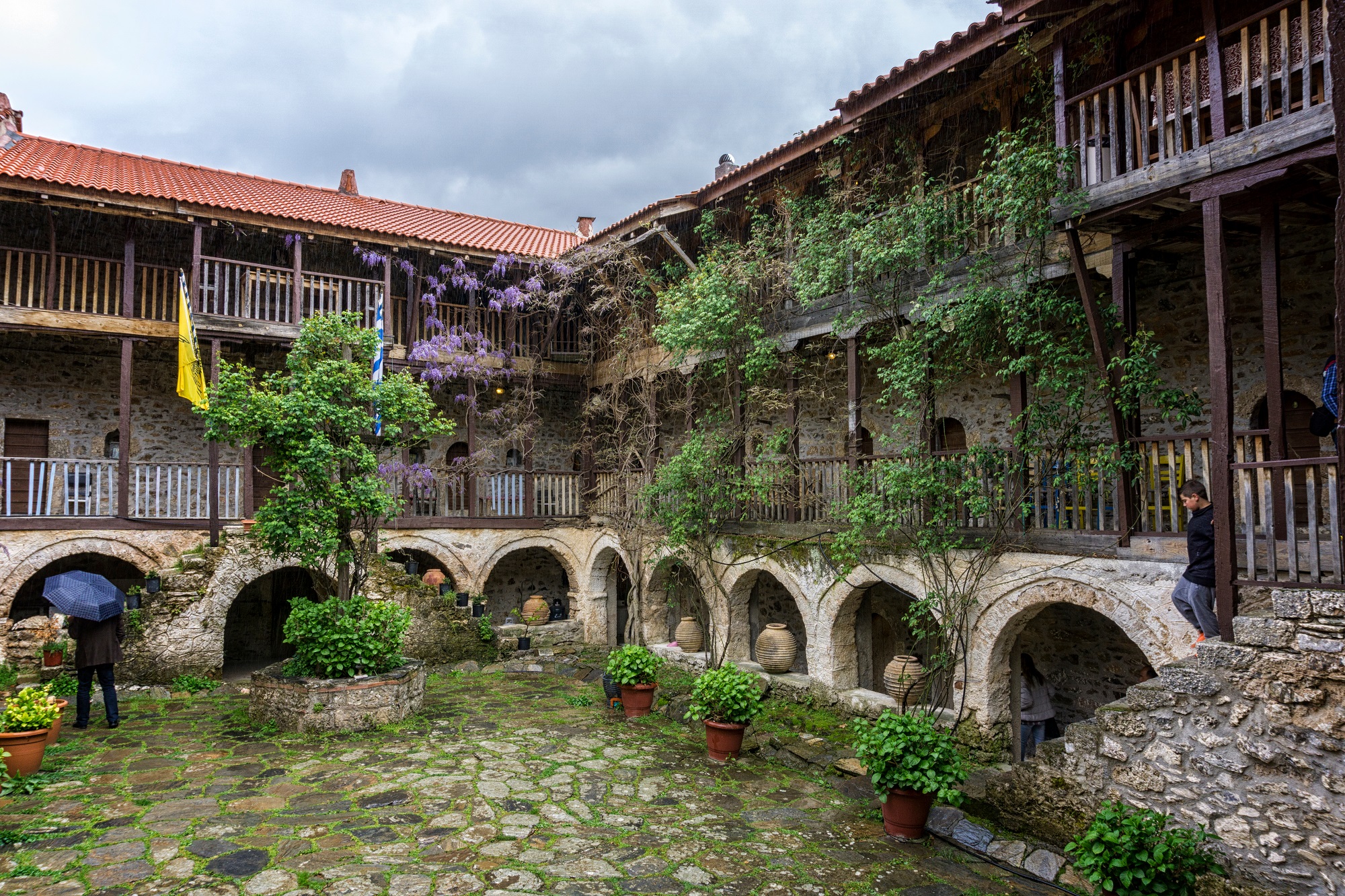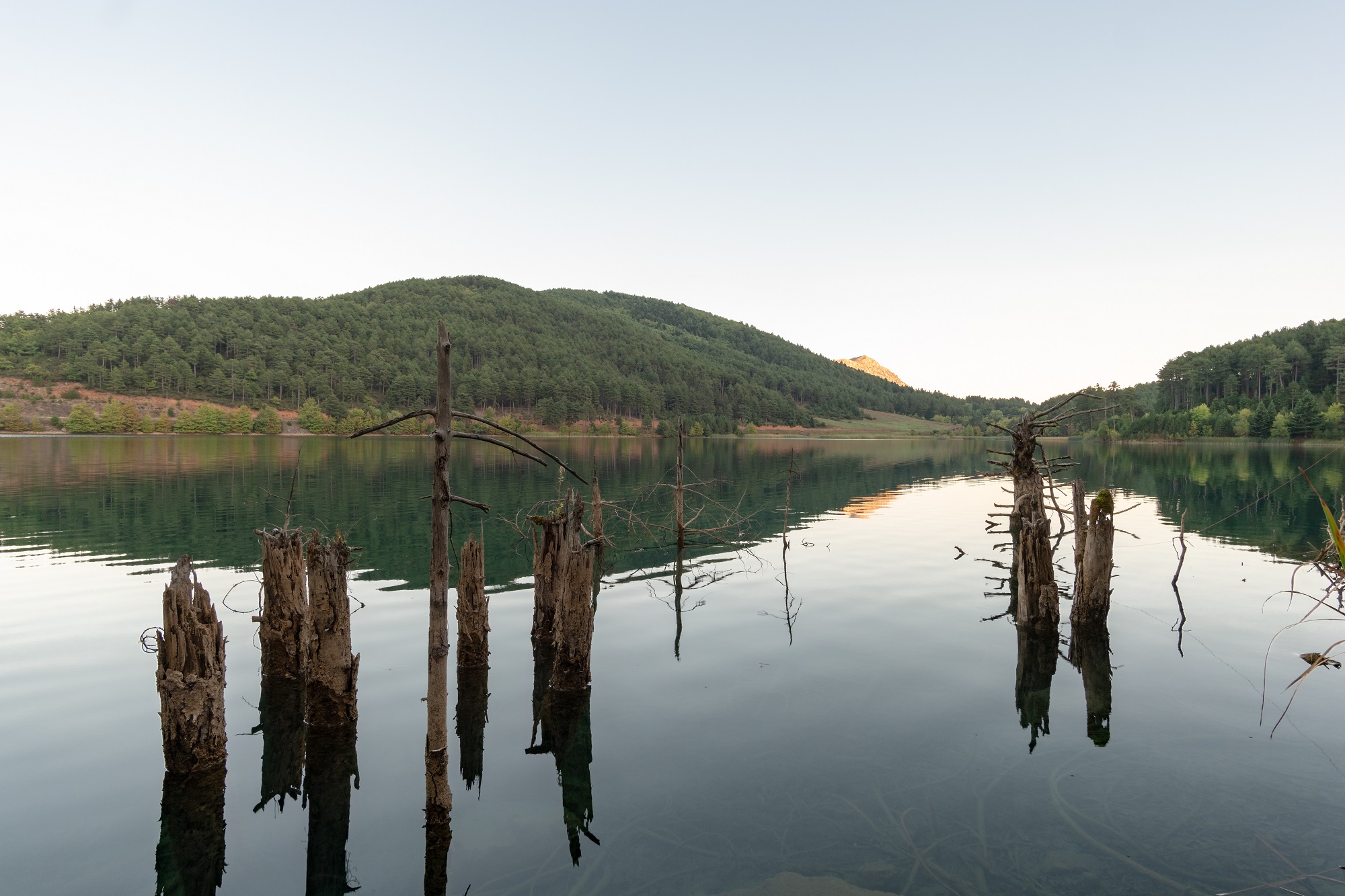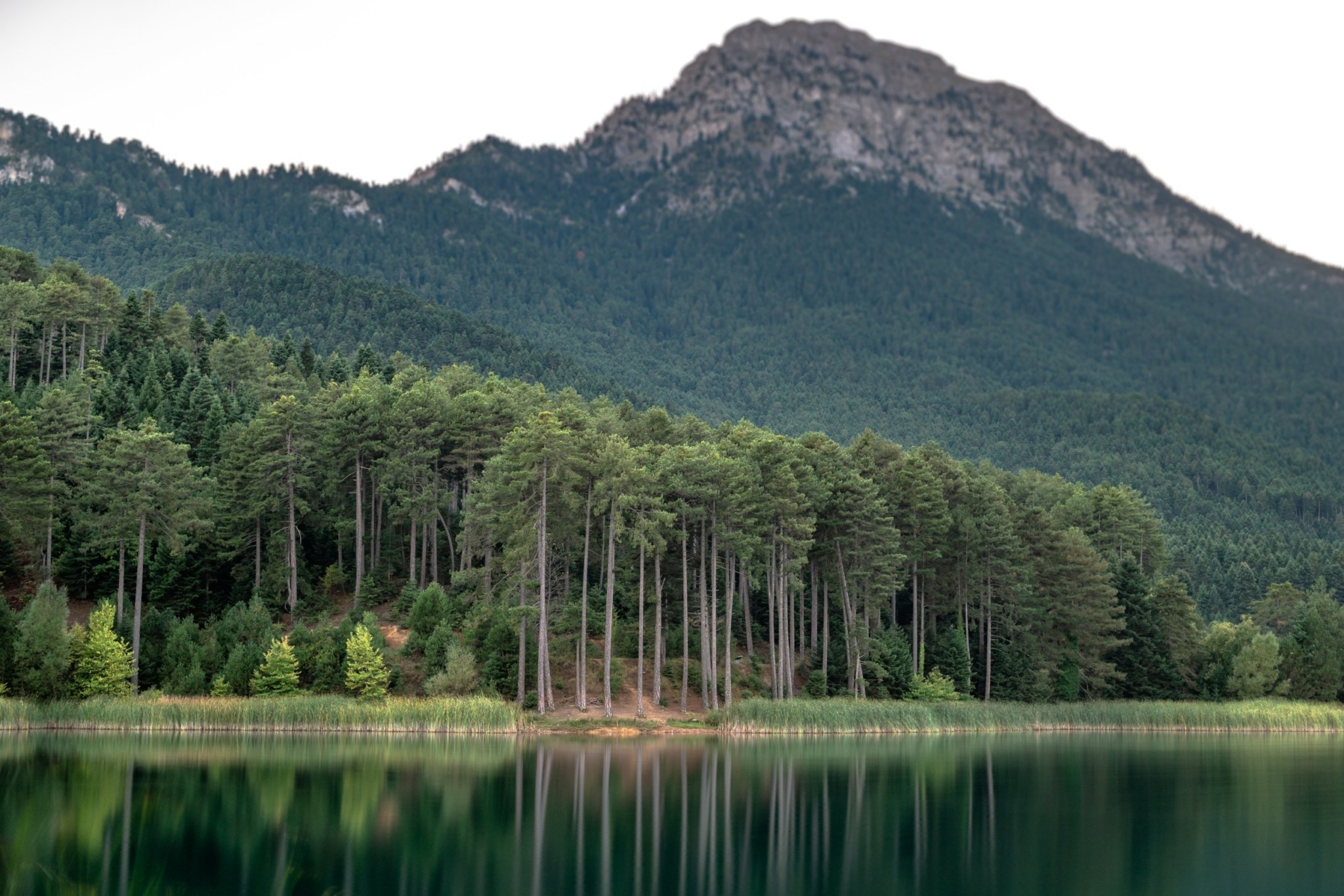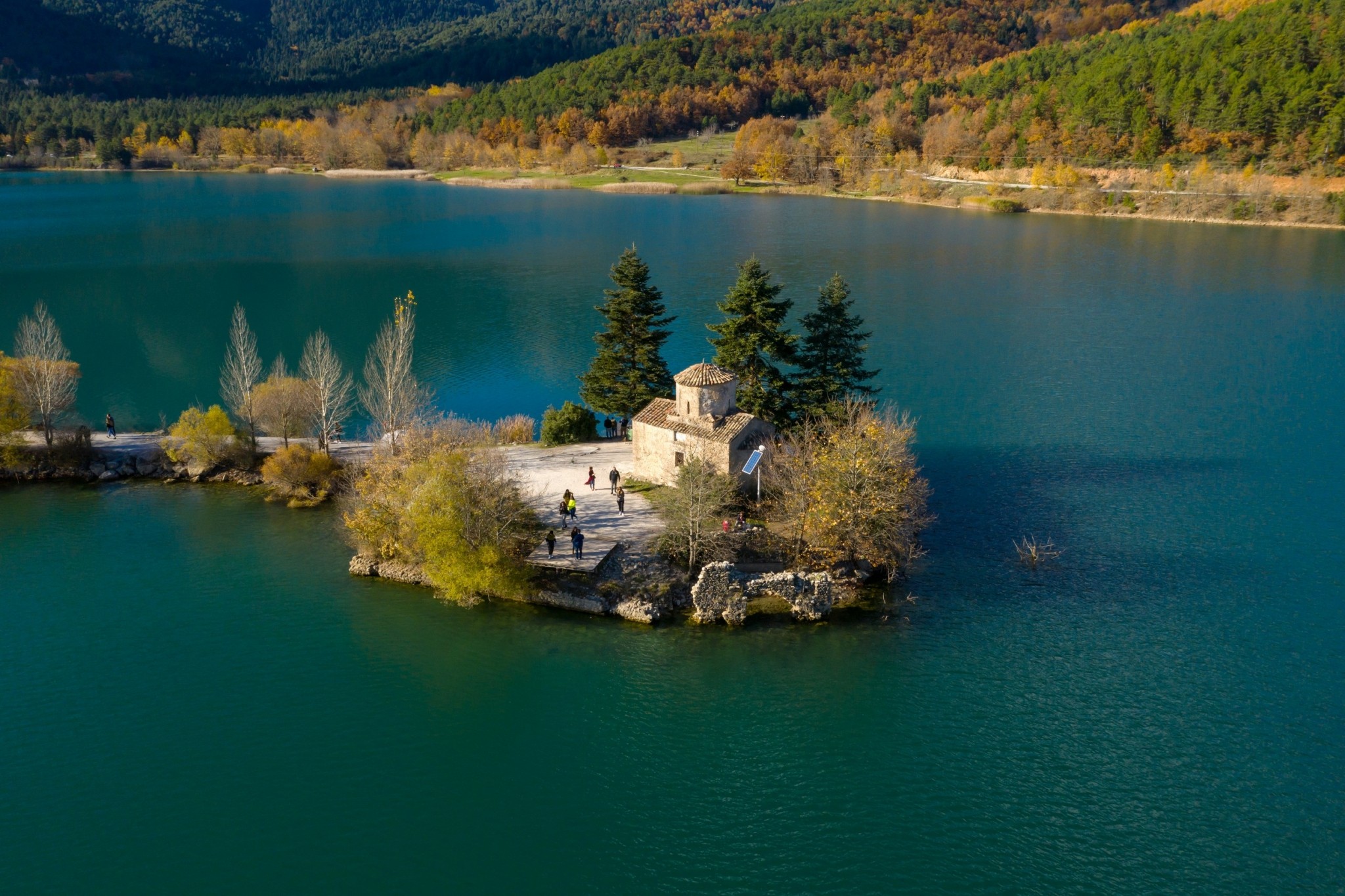Mountainous Corinthia is a place of great beauty, this beauty together with its proximity to Athens, that makes it easy for Athenians to head there for an excursion, has contributed to the area experiencing great tourist growth.
However, some parts of Corinthia have been publicised to excess, like for example Trikala, while other parts don’t receive too many visitors. The beautiful mountainous village Archaia Feneos is one of the less crowded places, probably due to a confusion: it shares a name with the mountain range between mount Helmos and Zireia and so, many people think that it’s just the name of the wider area and/or of an archaeological site (Archaia means ancient).
In fact, among the 10 villages of the Feneos mountain range, there is a Feneos village (formerly known as Syvista) and an Archaia Feneos, built at 340 m altitude in the northern slopes of mount Stroggilovouni, with mount Durduvana standing above it.
The name itself show the village’s long history. It’s a village located in an exquisitely beautiful place, just 92 km from Korinthos, that is easily accessible from Athens. Starting from the city centre, you can reach it after about a 2-hour-drive.
According to the 2011 census, Archaia Feneos has 280 permanent residents including the settlements Vilia (at 780 m altitude) and Louzi (at 840 m altitude).
The village appears to have been founded in the early 20th century, as a sparsely inhabited part of the Feneos municipality, with the name Kalivia. But before that, there was another village in the area that was probably called Doxia, according to Venetians records dating around 1700. The reasons for its abandonment are not known.
In 1912, Kalivia were recognised as an autonomous community, and in 1949 became part of Corinthia. The village was renamed Archaia Feneos in 1977, when archaeological research was able to verify that it was located in the location of the ancient Greek city.
The combination of the mountainous and forest landscape with the scenic lake Doxa that is very close, has made some visitors call it “Little Switzerland”, a nickname that is spreading fast turning it into a popular destination throughout the year.
Where to stay
Even though many visitors pass through Archaia Feneos just for a daytrip, either from Athens or from the surrounding area, there is a traditional guesthouse in the village, called “ O Mitos tis Ariadnis” where you can stay for a few days (tel. 0030 27470-41254 and 0030 69088-30070). All rooms have a living space with a fireplace, while they also have a patio with an amazing view of the valley, where you can enjoy your coffee.
In neighbouring Panorama (at 1,000 m altitude), you’ll find the stone guesthouse “Alexiou” with a lit fireplace during the winter and a view of the verdant slopes of Durduvana. The guesthouse also offers a treehouse for those seeking the ultimate experience of privacy, something unique in the whole of Corinthia. With only 4 rooms in total, you must book ahead of time to be sure of availability. (tel. 0030 27470-41020).
Where to go for coffee and/or drinks
You’ll find a café-bar in the village, around 100 m from the “O Mitos tis Ariadnis” guesthouse. However, many drive to neighbouring Goura (about 5 km away) to visit the café-bar “O Brouklis” that is considered one of the best mountainous cafés in the Peloponnese. Some nights there’s even live music or a DJ.
Where to eat
You don’t’ need to leave Archaia Feneos to find good food. In the tavern “O Kapris” you’ll enjoy dishes made using the famed local legumes, as well as rooster with pasta and roast boar – depending on the season, there might even be wild boar.
The “Diasimo Koutouki tis Limnis Doxa” also offers an amazing view of the lake, as well as Feneos gigantes beans with sausage, “country pouch” cooked in baking paper pouches. At “Mihalis” the goat is their specialty, as well as beef patties with fries.
3 things worth doing in Archaia Feneos
Archaia Feneos is surrounded by the mountainous extremely fertile nature found all over the mountain range of Feneos: here they produce legumes that are famed all over Greece (gigantes beans, broad beans, lentils, fava beans) that you can get directly from the “source” while the surrounding slopes are covered in firs, pines and oak trees. So, even though lake Doxa is what will steal the limelight, it’s also worth going on a walk around the village, and also learning about its important ancient past.
Visit the ancient town of Feneos and the archaeological museum
Feneos has been around already since the early Mycenean years, in fact it is mentioned by Homer in the Iliad as an independent state of Achaeans who participated in the Trojan War with 60 men under the leadership of king Agapenor. According to ancient mythology, Iphicles, Heracles’ brother, was buried there, as well as Myrtilus, who gave Myrtoan Sea its name. It was believed that one of the entrances to Hades was located in its ponor and in fact had been used by the goddess Demetra.
Feneos was an Arcadian city-state and it even participated in the Persian wars. The city gradually declined after the Romans conquered Greece. Today only ruins of the foundations remain at a site open to visitors that however is not organized, nor guarded.
The objects found in the digs are housed in the village’s Archaeological Museum – it reopened in 2021 after being closed for many years – at the main square. The main exhibits are sculptures, vessels and mosaics. The 80 cm long marble sandaled feet, that are said to belong to god Asclepius and the marble head of the goddess Hygiea stand out, and are both dated at 150 B.C.
Visit the monastery of Agios Georgios (and try the rose spoon sweet)
The monastery of Agios Georgios was established in the 14th century as a male monastery, in the area where the artificial lake Doxa is located today. In the 17th century it suffered great damage after a destructive flood, something that made the monks move the monastery about 1 km inland, at the three-storey building it is housed today. It is said that the old iconostasis can still be seen in the bottom of today’s lake, at about 8 m depth.
Legend has it that during the Ottoman rule the monastery housed the “krifo skolio” (secret school), but the only thing that has been historically proven is that the monastery functioned as a secret command centre during the 1821 War of Independence: meetings of the military leaders of Arcadia and Corinthia were held there, usually led by Thodoros Kolokotronis.
The balcony has a great view of the entire valley of Feneos, while inside the monastery there are lovely frescos, as well as a gold icon of Agios Georgios. Before leaving, you must try the rose spoon sweet (sweet preserve) that the monks make themselves using flowers they grow in the monastery’s garden.
Go see the lovely Doxa lake
It’s not to be confused with the lake of Feneos. Lake Doxa is artificial, with a 4.5 km perimeter and it was created in 1996, when the dam was created to stop the waters of the river of the same name in order to help the local farmers. It’s depth is estimated at 38 m.
The lake is located in a beautiful spot of Archaia Feneos, at 900 m altitude, on the foothills of Durduvana. It’s surrounded by the Aroania mountains and the mountaintops of Kyllini. The idyllic mountainous landscape and the calm turquoise waters where the firs and oaks of the surrounding slopes are reflected have earned it the nickname of “Little Switzerland”.
Since 2019, you can cross its waters using water bikes, while you can also go horseback riding on the slopes of Durduvana. Some prefer scuba diving, that allows you to admire the sunken forest as well as the rare blue crawfish that live on the right bank. You’re going to need a torch and a lot of patience to see them.
A special feature of lake Doxa is the so-called “Paleomonastiro” that dates back to the 14th century. It’s the only part of the Agios Georgios monastery that remained intact after the 17th century flood. So, when the monastery was moved to its current location, it was turned into a chapel dedicated to Agios Fanourios.
You can get to Agios Fanourios on a narrow strip of land, however, the predictions of specialists say that gradually it will become an island, so in the future it will only be accessible by boat.
Read also:
Crossing a beautiful artificial lake in Greece: From Trikala to Lake Stymfalia via Lake Doxa
Stefani, Corinth: Dairy farmer, offering goat’s milk, views the world from 900m above



